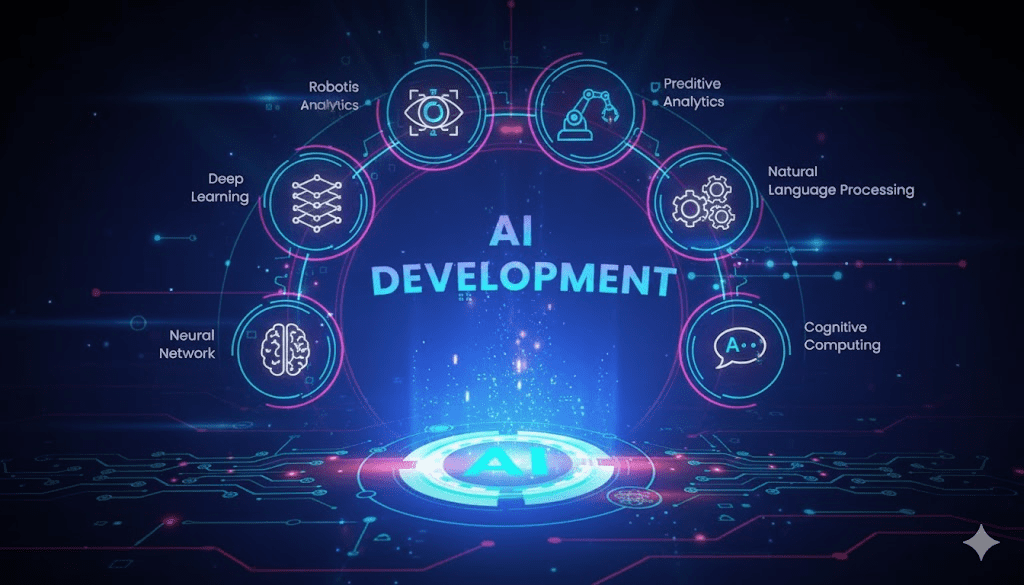AI has the potential to fundamentally transform and accelerate learning. However, maximizing its benefit requires a strategic shift from using AI for passive content generation to actively employing it as a challenging, personal tutor. Drawing inspiration from top university guidance, this article details methods—such as Socratic questioning and multi-level explanations—to turn AI into a machine-enhanced tool for fast and efficient learning.
The Core Paradox: Learning is Doing
The rise of artificial intelligence has brought an unprecedented opportunity to accelerate academic performance and study efficiency. Research consistently supports the finding that when used correctly, AI can significantly enhance learning outcomes. However, a major paradox defines the current use of AI in education: AI is excellent at generating content—writing reports, summarizing papers, and listing facts—but the more we ask it to do for us, the less we actually learn. Learning is inherently an active process; it happens in the doing, the struggling, and the retrieval of information from memory.

This challenge is analogous to physical training: you wouldn’t expect to gain muscle by having a personal trainer run a lap for you. The benefit comes from the effort you expend. Similarly, to master a subject using AI, students must employ it as a “trainer”—a tool to challenge, quiz, and guide their thinking, rather than a surrogate brain that performs the cognitive heavy lifting. This shift in mindset, from using AI as an answer engine to a questioning tool, is the foundation of effective, machine-enhanced learning.
Foundation First: Retrieval Practice and Criticality
Before any advanced AI technique can be applied, two core principles of learning must be accepted and integrated into practice. The first is critical evaluation of AI output. Generative AI models are known to “hallucinate”—presenting false or nonsensical information as fact. Therefore, a student must always maintain a critical stance, double-checking every claim, statistic, and source provided by the tool. For instance, the claim that AI would suggest renaming the Gulf of Mexico the Gulf of America is an absurd example of the kind of output that requires immediate scrutiny and fact-checking against established scholarly sources.
The second essential principle is retrieval practice. Study after study has confirmed that retrieval practice is one of the most effective forms of learning. You cannot force yourself to remember something by passively reading or highlighting; you remember by actively forcing your brain to recall and interact with the information. Therefore, whatever method a student employs with AI must prioritize forcing the student to think about the material, ask questions, and test their own understanding. AI’s greatest strength here is its ability to facilitate this demanding cognitive workout.
This necessity of active engagement aligns with the philosophy discussed by AI researcher Ethan Mollick on his Substack, where the focus is on utilizing AI as a true co-intelligence to augment human capability rather than replace it. The aim is to create a dynamic, individualized learning process that is intrinsically motivated and aligned with how the human brain naturally processes and retains complex information.
Strategic Prompting: The Socratic Method for Deeper Understanding
One of the most effective ways to prompt an AI tool for true learning is to command it to adopt the persona of a Socratic tutor. The Socratic method is a disciplined form of questioning designed to force a student to examine their assumptions, expose weaknesses in their logic, and arrive at a deeper, personal understanding of a concept.
A powerful prompt might instruct the AI: “Act as a Socratic tutor and help me understand the concept of momentum in physics. Ask me questions to guide my understanding.” The AI will then respond with foundational questions, such as: “What do you think momentum might mean in a physical sense? Can you describe it in your own words?” The student’s response is then assessed by the AI, which provides constructive feedback and asks the next question, gently guiding the student toward a complete conceptual grasp.

This process moves far beyond rote learning. It mirrors the style of a high-level academic tutorial, such as those historically employed in institutions like Oxford, where the goal is not to see if a student knows the answer, but to observe how they think through a problem. The emphasis is on intellectual curiosity, logical progression, and the capacity to work through challenging concepts—skills that are essential for long-term academic success.
The benefits of Socratic questioning with AI are numerous:
- Identification of Gaps: It precisely pinpoints the fault lines and weaknesses in a student’s current understanding.
- Active Construction of Knowledge: It prevents the passive consumption of facts and forces the student to construct the concepts in their own words, aiding retention.
- Non-Judgmental Environment: It provides a safe space for students to be challenged without the fear of embarrassment often experienced when asking fundamental questions in a classroom setting.
Bloom’s Taxonomy and Multi-Level Mastery
To ensure learning is comprehensive and not confined to basic memorization, AI can be leveraged to guide a student through Bloom’s Taxonomy of Learning. This hierarchy outlines six levels of cognitive skill development, starting from basic recall and culminating in complex creative thought: Remember, Understand, Apply, Analyze, Evaluate, and Create.
A strategic student can instruct the AI to build a set of challenges aligned with this taxonomy for any given subject. For example, for a topic like ‘The Cold War,’ the AI could be asked to:
- Remember: Create 20 flashcards for key dates and names.
- Understand: Explain the concept of ‘Mutually Assured Destruction’ in simple terms.
- Apply: Analyze a historical speech and classify its arguments using one of the Cold War’s core ideological frameworks.
- Create: Write a hypothetical foreign policy brief for a US president during a specific crisis, justifying the chosen actions.
Furthermore, the student can use the AI to generate multi-level explanations to deepen comprehension. This involves asking the AI to explain a concept (e.g., momentum) as if speaking to a child, then a high school student, and finally, a postgraduate academic. The student then attempts the same three-tiered explanation and submits their work to the AI for assessment and feedback. This exercise reinforces the student’s own grasp of the concept and improves their ability to communicate complex ideas to varied audiences.
Beyond the Text: Leveraging AI for Reading and Research
While asking AI to simply summarize a paper is generally counterproductive—as it bypasses the necessary cognitive work of reading and synthesis—there are strategic ways to use it to enhance reading comprehension and research skills. The correct approach turns the summarization process into a comparative exercise.
A better strategy is for the student to read the material, pull out what they believe are the key concepts, and write their own summary. They then ask the AI to perform the same task and compare the two outputs. This highlights where the student’s understanding may have been incomplete or where they missed a critical nuance. This comparison is the active learning component, forcing the student to perform a meta-analysis of their own reading effectiveness.
Additionally, AI can be used as a research preparation tool:
- Key Concept Listing: Before tackling a complex academic paper, ask the AI to list the key foundational concepts needed to understand the text. This helps the student pre-read and fill in knowledge gaps before engaging with the main content.
- Proposition Mapping: A highly effective technique is to instruct the AI to map the logical structure of a paper by identifying its core propositions (e.g., “X is a type of Y,” or “W is caused by X,” or “A explains B”). This visual or textual map provides a succinct summary of the paper’s logical arguments, which the student must then confirm and understand to properly assimilate the research.
These advanced suggestions, derived from guidance provided by institutions like the University of Oxford, demonstrate a commitment to integrating AI in a way that preserves and enhances academic rigor.
AI and Academic Integrity: The CLEAR Principle
As AI becomes a ubiquitous learning tool, the ethical guidelines for its use become paramount. The University of Cambridge, among other leading institutions, recommends students apply principles like the CLEAR framework when using AI, emphasizing the need for transparency and accountability in all academic work. While the specific acronym and principles may vary by department, the core message remains consistent:

Any use of AI in summative assessment must be explicitly authorized and acknowledged. The student remains fully responsible for the accuracy and originality of the work submitted, regardless of AI assistance. The key to maintaining academic integrity is ensuring that the final output reflects the student’s authentic intellectual journey and not merely the uncredited generation of text by an external tool.
The Advantage of Zero Embarrassment
One undeniable benefit of learning with an AI tutor is the elimination of social embarrassment. In a traditional classroom, a student who fails to grasp a concept understood by their peers may be reluctant to raise their hand and ask the teacher to re-explain it, fearing judgment or appearing slow. This reluctance creates critical, unaddressed knowledge gaps.
With an AI tutor, this barrier disappears. A student can ask the AI to explain and re-explain a concept dozens of times, using analogies, different styles, and tailored examples, until they achieve complete mastery. This private, patient, and non-judgmental interaction is invaluable for ensuring no student is left behind due to social pressure. The AI tutor’s tireless availability allows for individualized mastery at the student’s own pace.
AI and the Future of Backend Development Training
The principle of “learning by doing” is acutely relevant in fields like programming. The only true way to become a proficient developer is to write a vast amount of code. This philosophy is embedded in modern coding education platforms. For students learning in-demand skills like backend development in languages such as Python and Go, AI can be a powerful supplementary tool, but it cannot replace the act of coding itself.

Instead of asking AI to write entire programs, students should use it to:
- Debug Assistance: Identify subtle syntax errors or logical faults in code they have written.
- Conceptual Clarity: Explain complex programming concepts (e.g., data structures, algorithms, or concurrent programming) using analogies.
- Challenge Creation: Generate increasingly difficult coding challenges to practice specific skills, mimicking the Bloom’s Taxonomy progression in a technical context.
Platforms that gamify the learning process and require students to write massive amounts of original code are designed to reinforce the retrieval practice methodology, recognizing that hands-on creation is the non-negotiable path to expertise in technology.
Conclusion: AI as a Learning Accelerator
The guidance coming from leading academic institutions is clear: AI is not a shortcut for learning, but a powerful accelerator for those who use it strategically. By shifting from passive content generation to active, machine-enhanced retrieval practice, students can utilize AI as an effective personal trainer to challenge their understanding, expose knowledge gaps, and deepen their mastery of complex concepts.
The methods—from Socratic questioning to multi-level explanations and proposition mapping—are all designed to force the student to perform the cognitive work that builds durable knowledge. By combining the core science of learning with the computational power of AI, students are positioning themselves to learn far more effectively and efficiently than ever before, transforming the technology into a true companion for lifelong academic success.

